In Part 1 of our look into the world of apps we explained the difference between ASO and App Indexing (see the first blog here). In this article we’ll provide guidelines on how to increase your rankings in the App Stores and outline some of the free tools available and key steps in the process.
ASO (App Store Optimisation) is the process of increasing an app's visibility in the associated App Store. For the purpose of this post we’ll be focusing on the Google Play Store and the Apple App Store.
Contributing Factors
The algorithms that govern app rankings aren’t quite the same as the ones we’ve been wrestling with in SEO. While there are similarities, a lot more weight is given to performance, thus making ASO an act of juggling Keyword Targeting, Performance Metrics, UX and Feedback.
Keywords remain a vital part of your ASO plans. They give a strong signal regarding the app’s subject and content. Before you start your ASO process, consider developing a keyword strategy, ensure you understand the levels of competition you’ll be up against and be aware of any long tail opportunities.
Title/Name:
Picking your app’s name isn’t simply a case of slapping your brand name on it or spamming it with keywords. It should be unique enough to be found when specifically searched for but also include keywords to back it up – remember, this is one of the most important (controllable) factors you have.
Data from Mobile Dev HQ suggests that using a keyword in the title can have as much as a 10.3% increase in ranking.
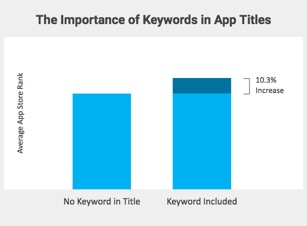
Leeching off another app’s established presence is not recommended. We suggest targeting search keywords in place of competing apps. For example, if we look at the word ‘Clash’, we can see many developers have attempted to capitalise on the popularity of the game ‘Clash of Clans’. Not only does this oversaturate the search term, it also creates the opportunity for users to download your app by accident – potentially leading to a negative review and/or a discarded download.
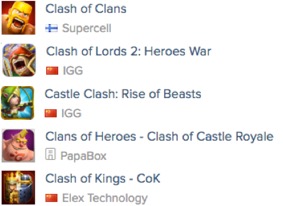
If you’re unsure of what the marketplace looks like, the volumes available and competition behind each keyword or just want to do a bit of research before you plunge headlong into App development and planning, we strongly recommend signing up (for free) to services such as App Annie, or one of the many alternatives scattered across the web.
Key facts:
- Apple - Allows 50 characters (recommended 23 or less)
- Google - Allows 30 characters
- Be original
- Research your keywords
Keywords:
For the Apple App Store you’re provided with a keyword field. At present Apple doesn’t use the content found in the app’s description as a ranking signal with this field being used in its place. With only 100 characters to play with don’t waste any by targeting your brand or app name.
Naturally, Google has the edge in terms of experience, so instead uses your description to pick out keywords – much like traditional SEO.
Key facts:
- Apple – Allows 100 characters
- Google – not used
Description:
Because your description will not directly affect your Apple App Store ranking we suggest using it to provide exciting and enticing content to encourage a download and give useful information to the user.
(While the Apple description won’t impact ASO, it can affect how your app appears in web searches made via Google – so don’t ignore them completely!)
In the Google Play Store however, this is an important piece of content. Ensure you use your keywords and similar terms where possible without over-saturating the text and making it spammy. Best practice suggests that primary keywords should be repeated up to five times (after which point they’ll provide little/no value).
Key facts:
- Apple – Allows 4,000 characters
- Google – Allows 4,000 characters (plus an 80-character summary)
- Use keywords between three to five times.
- Consider calls to action
- Include screenshots/previews to show users what they’re getting
Categories:
Picking a category is an important part of ASO. This is especially true when your app falls into multiple categories. By analysing a collection of app ranks, both category and overall score gives a good indication of competition.
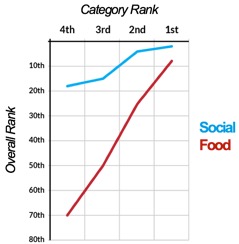
In the above study food is by far the category with the lowest competition.
The following statements are true:
Social – Apps have to rank well in the overall store ranking to rank in the category.
Food – Apps with a lower overall store rank can still rank well in the category.
Developer Name:
It may seem strange but where possible you should aim to publish the app with a relevant developer name that also targets these keywords. It’s only a minor ranking factor but we’re looking to squeeze every bit of juice out of this process!
App Icon:
A well designed App Icon can make a real difference in your CTR. Ensure it’s simple to recognise and easy to understand the app’s purpose. Avoid using unnecessary words and secondary logos as it will make the more difficult to immediately recognise the app’s purpose.
If you’re finding yourself ranking higher without a return in traffic, consider your icon’s appearance and how it can be improved to appeal to your target market. You can use App Annie or similar tools to spot opportunities to stand out; for example, the below image shows the top nine Apps’ Icons for ‘Restaurant Review’:
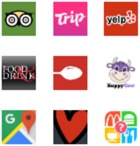
Performance Metrics
This is where ASO breaks away from treating an app like a webpage. Meta data, titles and keywords get plonked on the shelf whilst we assess performance metrics.
Volume:
Quite simply, this is the gross number of downloads an app has. Those that have been downloaded a lot are likely to have been shared frequently or suggested to friends. While volume isn’t always a sign of quality it is a clear indication of popularity and with both stores looking to provide users with a good experience this is a relatively well accepted cornerstone of ASO.
Velocity:
I know what you’re thinking. “Just because Queen were popular in the 80s and 90s doesn’t mean that they’ll be good today.” Well, the same is true of apps and this is where Velocity comes into play.
This critical ranking factor asks “What’s popular now?” It looks at the number of downloads in the last X days. App Stores do not currently distinguish between paid and organic traffic; as such you should always consider the external campaigns you’re running to help improve downloads.

Ratings & Reviews:
Having a five-star rating isn’t just some pretty stars against your SERP listing. In the App Store it’s a ranking signal. While Google places more emphasis on this as a ranking signal it’s still taken seriously by Apple too and along with your Icon, Description, Screenshots and Previews the star rating is one of the best guides users have when it comes to pre-empting quality.
As the below popular comic from xkcd suggests, users aren’t looking for a perfect score, but a natural looking star rating that isn’t too low!
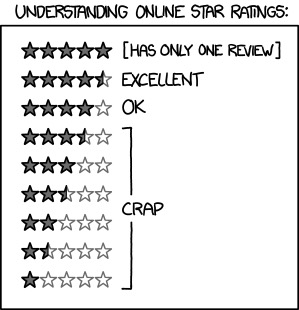
Important: Sure, ask your friends to test and rank your app but don’t pay for fake reviews. You may find them deleted or have your publishing account banned.
How to get users ranking the App?
There are a lot of theories floating around about how to maximise reviews. However, there’s only really one way to achieve this that fits in with marketing best practice and is as unobtrusive as possible for the user.
- Simply ask them if they’re happy with the app.
- If no, then provide them with the option to say why – no more prompts.
- If yes, then ask them to rate the app, with the option to delay or to change their mind – no more prompts.
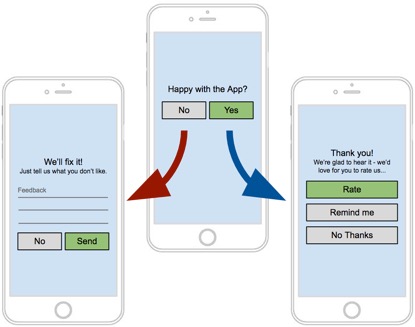
Discard Rate:
The discard rate is a negative ranking factor. If you promise something you don’t deliver, then it’s likely your app will be removed from the device with only a single use, and this will hurt your ranking. User retention is crucial, however being honest with what the app can do is also important.
Remember, not only can a user discard your app they can also leave a negative review.
Crashes:
An app that crashes frequently is a sign of a poorly developed app or one that is too complicated to use without crashing it. Both platforms track how often apps crash, while it isn’t yet confirmed as being a ranking factor it's hardly likely to be a positive experience for users!
Usage Rate:
If users like your app, they are likely to use it multiple times a day and return to it day after day without deleting it. Usage Rate is therefore an important ranking factor and one that can be tracked either through the developer dashboards or via third-party analytics for more detail.
Backlinks & Shares:
The quality and quantity of backlinks pointing towards your app and how often it’s shared on social media can also have some bearing on ASO within the Google Play store. While there’s no indication of how the mobile-first index may affect app listings in SERPs, app packs or ASO as a whole, it is likely that authority of the website associated with the app will also have some weight as a ranking factor.
Summary
As is often the case with marketing, a natural and considered approach based around the habits and search trends of your target market, spearheaded by quality content, will produce the best results.
Top tip:
Don’t rush! Plan in the keyword research and subsequent tasks with plenty of time to test and make amends in case the content doesn’t get approved by the App Stores. Don’t prematurely launch an app and the associated campaign - every view counts and conversion is critical.
Remember ASO isn’t a one-time thing, continually review your keywords and categories to ensure you are targeting those with both volume and relevancy to your app.
We hope you found this article informative and as always, if you have any questions please get in touch via the comments section below or through our contact page.
See the next in the series here now and if you'd like to access the App Store Optimisation checklist please click the button below!

Sign up for our monthly newsletter and follow us on social media for the latest news.
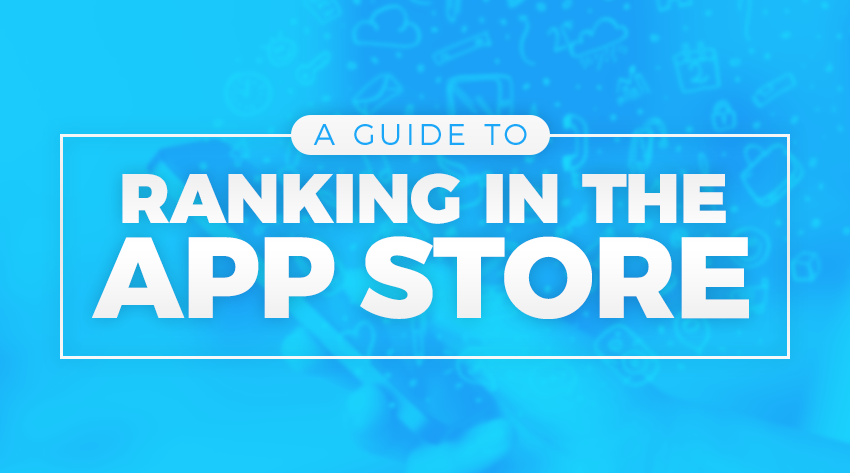




 Proudly part of IPG Mediabrands
Proudly part of IPG Mediabrands